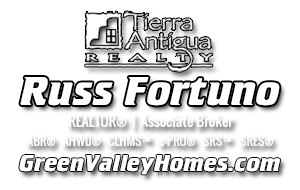4 Tips to Determining how much house you can buy

Knowing how much mortgage you can handle will ensure home ownership will fit within your budget.
Home ownership should make you feel safe and secure, and that includes financially. Be sure you can afford your home by calculating how much of a mortgage you can safely fit into your budget.
Why not just take out the biggest mortgage a lender says you can have? Because your lender bases that number on a formula that doesn’t consider your current and future financial and personal goals.
Think ahead to major life events and consider how those might influence your budget. Do you want to return to school for an advanced degree? Will a new child add day care to your monthly expenses? Does a relative plan to eventually live with you and contribute to the mortgage?
Consider lifestyle issues as you check out these four methods for estimating the amount of mortgage you can afford.
1. Prepare a detailed budget.
The oldest rule of thumb says you can typically afford a home priced two to three times your gross income. So, if you earn $100,000, you can typically afford a home between $200,000 and $300,000.
But that’s not the best method because it doesn’t take into account your monthly expenses and debts. Those costs greatly influence how much you can afford. Let’s say you earn $100,000 a year but have $1,000 in monthly payments for student debt, car loans, and credit card minimum payments. You don’t have as much money to pay your mortgage as someone earning the same income with no debts.
Better option: Prepare a family budget that tallies your ongoing monthly bills for everything — credit cards, car and student loans, lunch at work, day care, date night, vacations, and savings.
See what’s left over to spend on home ownership costs, like your mortgage, property taxes, insurance, maintenance, utilities, and community association fees, if applicable.
2. Factor in your down payment.
How much money do you have for a down payment? The higher your down payment, the lower your monthly payments will be. If you put down at least 20% of the home’s cost, you won’t be required to carry private mortgage insurance, which protects the lender if you default and costs hundreds each month. That leaves more money for your mortgage payment.
The lower your down payment, the higher the loan amount you’ll need to qualify for and the higher your monthly mortgage payment.
But, if interest rates and/or home prices are rising and you wait to buy until you accumulate a bigger down payment, you may end up paying more for your home.
3. Consider your overall debt.
Lenders generally follow the 43% rule. Your monthly mortgage payments covering your home loan principal, interest, taxes and insurance, plus all your other bills, like car loans, utilities, and credit cards, shouldn’t exceed 43% of your gross annual income.
Here’s an example of how the 43% calculation works for a home buyer making $100,000 a year before taxes:
1. Your gross annual income is $100,000.
2. Multiply $100,000 by 43% to get $43,000 in annual income.
3. Divide $43,000 by 12 months to convert the annual 43% limit into a monthly upper limit of $3,583.
4. All your monthly bills including your potential mortgage can’t go above $3,583 per month.
You might find a lender willing to give you a mortgage with a payment that goes above the 43% line, but consider carefully before you take it. Evidence from studies of mortgage loans suggest that borrowers who go over the limit are more likely to run into trouble making monthly payments, the Consumer Financial Protection Bureau warns.
4. Use your rent as a mortgage guide.
The tax benefits of home ownership generally allow you to afford a mortgage payment — including taxes and insurance — of about one-third more than your current rent payment without changing your lifestyle. So you can multiply your current rent by 1.33 to arrive at a rough estimate of a mortgage payment.
Here’s an example: If you currently pay $1,500 per month in rent, you should be able to comfortably afford a $2,000 monthly mortgage payment after factoring in the tax benefits of home ownership.
However, if you’re struggling to keep up with your rent, buy a home that will give you the same payment rather than going up to a higher monthly payment. You’ll have additional costs for home ownership that your landlord now covers, like property taxes and repairs. If there’s no room in your budget for those extras, you could become financially stressed.
Also consider whether or not you’ll itemize your tax deductions. If you take the standard deduction, you can’t also deduct mortgage interest payments. Talking to a tax adviser, or using a tax software program to do a “what if” tax return, can help you see your tax situation more clearly.
By G.M. Filisko
G.M. Filisko is an attorney and award-winning writer who occasionally rearranges her furniture to find the best placement—and keep her dog on his toes. A frequent contributor to many national publications including Bankrate.com, REALTOR® Magazine, and the American Bar Association Journal, she specializes in real estate, business, personal finance, and legal topics.
Visit HouseLogic.com for more articles like this.
© Reprinted from HouseLogic.com with permission of the NATIONAL ASSOCIATION OF REALTORS®.”



